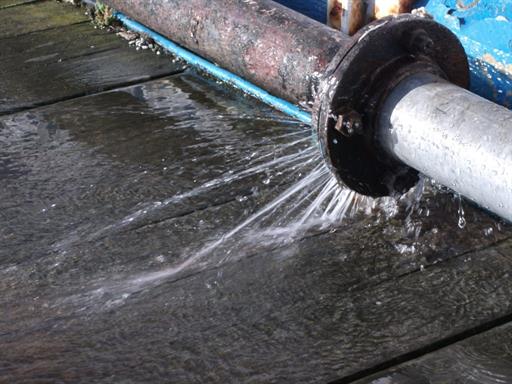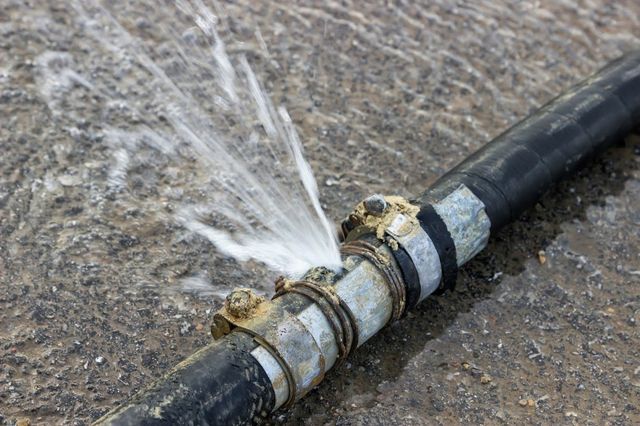Spotting and Swiftly Addressing a Broken Pipe: An Effective Approach
Spotting and Swiftly Addressing a Broken Pipe: An Effective Approach
Blog Article
In this article down the page you can find a good deal of worthwhile additional info in relation to What to Know Before Installing a Dishwasher.

A burst pipeline is a major emergency; you can just stand as you see water you pay very much to rejoin with the earth. In even worse cases, you observe a pool on your kitchen area floor, which is an excellent trip threat, especially if you have youngsters around. If the pipe that ruptured was in your walls, problem: you might need to paint that whole section.
Just how can a calamity like a ruptured pipeline be stopped and also taken care of? Well, by listening to your expert emergency plumbing professionals and also adhering to these rules.
Just how do I know when my pipes have ruptured?
Fluctuating water pressures
Pipelines do not simply burst in a day. You might have seen that your kitchen area tap or shower doesn't run promptly when you turn the tap. It might pause for a couple of seconds and then blast you with even more pressure than typical.
In various other instances, the water may appear normal initially, after that decrease in pressure after a few secs.
Damp walls as well as water discolorations
Before a pipe ruptureds, it will leakage, many times. If this relentless leaking goes unnoticed, the leakage may graduate right into a vast laceration in your pipeline. One very easy way to avoid this emergency is to look out for wet walls ad water spots. These water spots will lead you right to the leakage.
Puddles under pipelines and sinks
When a pipe bursts, the outflow forms a puddle. It may appear that the pool is growing in dimension, and despite the amount of times you wipe the pool, in a few minutes, there's another one waiting to be cleaned. Typically, you may not be able to trace the puddle to any visible pipes. This is an indication to call an expert plumber.
Untraceable trickling sounds
Pipeline ruptureds can occur in one of the most undesirable locations, like within concrete, inside walls, or under sinks. When the house goes silent, you may have the ability to listen to an aggravatingly consistent leaking noise. Even after you have actually examined your shower head as well as cooking area faucet, the leaking may continue.
Beloved reader, the dripping might be originating from a pipe inside your wall surfaces. There isn't much you can do about that, except inform a professional plumber.
Shut off the Water
When water ices up, it increases in volume by about 9 percent. And also it broadens with incredible force: The pressure inside pipelines might go from 40 pounds per square inch to 40,000 psi! No pipeline can hold that much stress, so it breaks open. The break may take place where the ice types, yet more frequently, it occurs where water stress finds a weak point in the pipeline. That may be inches or even feet from the icy area. Locate the water shutoff valve as well as turn off the water to stop more damages. You might additionally require to shut off the electricity too, depending on where the leakages occurs and also exactly how large it is.
Polluted water
Lots of people assume a ruptured pipeline is a one-way outlet. Fairly the contrary. As water drains of the hole or gash in your plumbing system, impurities discover their way in.
Your water might be polluted from the resource, so if you can, examine if your water tank has any troubles. Nevertheless, if your drinking water is provided and also purified by the city government, you need to call your plumber instantly if you see or scent anything amusing in your water.
What do I do when I find a burst pipeline?
Your water meter will certainly continue to run even while your water wastes. To lessen your losses, find the primary controls and also turn the supply off. The water mains are an above-ground structure beside your residential property.
How to Fix & Detect a Leaking Pipe
How Do I Know if a Pipe is Leaking?
Leak detection tests can help you determine if your pipe has a leak. Even if you don’t see an apparent leak, you should still conduct leak detection tests regularly to save water and money—and prevent major damage to your home.
Water meter. It can be helpful to figure out what your usual water meter usage numbers are and then monitor them regularly. To monitor your meter, first, turn off all water faucets in your home. Check the meter and write down the numbers. In a few hours, check the meter again. If the numbers have changed, you have a leak. Water gauge. Use a water gauge to test your water pressure. Your showerhead should produce a certain amount of water pressure based on its model and design. If the pressure is lower than it is supposed to be for that specific showerhead, your home likely has a leak. Puddles. Look inside your bathroom, laundry, and kitchen sink cabinets. Puddles around the cabinets or around toilets, tubs, showers, and washing machines indicate the presence of a leaking pipe. You may also notice loose tiles, peeling or flaking paint, or mold caused by water accumulation. Napkin test. Even if you don’t see any puddles, you may still have a leak. You can test for water leaks in the bathroom, laundry, and kitchen by wiping below-sink connections with a napkin, paper towel, or piece of toilet paper. If it becomes damp, you probably have a leaking pipe under the sink. Discolored walls. Walls that are discolored—usually with brown or yellow stains—or bulging might mean that they have been impacted by water damage caused by a leaking pipe. Smell. A leaky pipe will create sitting water, and over time, that water may develop a musty smell. If your home smells musty, but you can’t locate the source, it may be due to a leak. Steps for Fixing a Leaking Pipe
A leaky drain can be remedied by tightening the pipe base, replacing the drain seal, caulking the rim, and tightening the pipe nut. Similarly, a leaking toilet pipe can be treated by tightening the packing nut. You may also need to replace the valve. A leaky faucet may just need tightening or replacement of the washers. If that doesn’t work, consider replacing your faucet. If your pipe has a hole in it, you may want to use a pipe leak sealer or pipe leak tape. This quick fix for water pipe leaks can also temporarily fix a copper pipe leak. https://www.ahs.com/home-matters/quick-tips/how-to-tell-if-pipes-are-leaking/

I'm very eager about What to Know Before Installing a Dishwasher and I hope you enjoyed reading the new blog posting. Enjoyed reading our piece? Please share it. Help others find it. Many thanks for your time. Visit again soon.
Browse Our Site Report this page